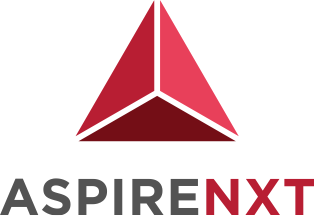Data Governance: The Best Practices Framework for Managing Data Assets

Introduction
Data governance involves certain processes, procedures, and duties to ensure transparency and accountability for ownership of data within enterprises. It governs the access to all those processes. Let us understand what is data governance in detail.
What is Data Governance?
Data governance regulates the enterprise environment. The meaning of data governance is summarised in the following lines. It aims at ensuring that the data across a business or enterprise is safe, secure, and also regulates who can access that data. It also ensures an effective mechanism and makes efficient use of information about what data and methods have to be used in order to make use of the data. It aims at clearly defining the strategic, tactical, and operational rules and responsibilities in using that data.
Data Governance vs Data Management
Data governance defines the rules and regulations in order to process and use data. Well, data management refers to the policy is for decision-making about the usage of that data. Data management involves dealing with different data projects and also involves strategizing several policies and breaking complex big data while implementing procedures. It helps to manage the data life cycle needs of an organization.
It includes data quality, data security and compliance, data stewardship, and data transparency which form the pillars of the process. Data quality ensures that the data which is collected is authentic, reliable, and accurate because it forms one of the major foundational tools of any data-driven organization.
Data stewardship ensures that the data access is monitored properly. Data security and compliance are the practice of labeling data by creating points that are secure and maintaining full encryption between the user and security. Better transparency and integrity with the way how data is dealt with is given by it. Its full encryption is also ensured. Data management enables such policies which are required for the correct management of the data. It involves the act of blueprinting the data so that the procedures are more effective, beneficial, and quicker. Together, these two processes exist for integration and helping. The right quick and more compliant uses of data.
Data Governance Framework
Data governance framework includes all of the rules, regulations to collect and store and analyze data. It helps in democratizing data and also supports collaboration and a variety of data can be used with the right amount of analysts and governance. This framework and structure are needed in order to build a complete data classification and a unified view across the organization.
It includes the data relationships, linear enterprise metadata, technical and data certification, data profiling, data classification reference data master data. Data quality, data issues, data owners. Data literacy, and enforcing monitoring data policies. All of these facilitate quick workflow and processes. One needs to understand the meaning of data governance completely to make the best use of it.
Goals of Data Governance
Data governance offers more readiness and quicker reactions. The critical factors which help in measuring its success are as follows:
People: People collaborate to define the different processes and help support the strategic drivers. It helps him have the necessary skills and develop a chain management plan.
The processes involved and all of the methods and rules are used to deliver quicker and more meaningful impacts and results.
Contributors: Experts will provide their expertise in running the data management process like the IT analysts, architects, and system exports are called the contributors because they’re in expertise in dealing with these dishes.
Technology: The technology in rule, all the tools, subject matter, and platforms to enable a better data governance process and also helps in enabling data profiling, lineage, and metadata tools to scale the data.
Benefits of Data Governance
The benefits of data governance help in reducing and mitigating data risk. It makes it more accountable, secure, and transparent. It evaluates risk exposure to protect and push the data and defines regulated data. It has it in mind that the company uses such data user content consent and helps meet future regulations without rework. One needs to understand what data governance is in detail in order to reap its benefits.
Data Governance Principles
The basic principles of data governance include centralization of data, data stewardship, transparency, standardization of rules and regulations, and accountability. These are the five most crucial governance principles in the framework, which ensure the overall success of the business. All of these define the policies that are helpful in decision-making in order to ensure and observe them faithfully. Data quality standards help in improving the quality of business data by ensuring collaboration and the concept of standards. These focus on ensuring how data is recorded and measured and if the organization’s businesses are abiding by the proper standard and the criteria on an ongoing basis. Data quality index and framework for self-assessment shall be rightly done to effectively assess data.
Data Governance Roles
Data governance measures and frameworks are used to mitigate risks and improve data administration streamlining of data that in turn aid the organization to better assess and analyze data for future processes this also helps in increasing the value of data and optimizing all the methods overall internal and external communication factors and optimizes operational costs.
Data Governance Tools
The different data governance tools are Little image, ASG Technologies.
- Informatica
- Collibra
- IBM
- Clearswift
- Alteryx to name a few.
All of these governance tools help in improving data architecture, integrity and adding it to the storage and operation functions. It also helps in data warehousing and business intelligence.
All of these data governance tools increase utilization of data and help in automating it by this way, enterprises can save their time and also improve the quality of work delivered by regulatory compliance with the rules and also integrating with the existing data platforms with the help of which they can deliver according to their capability. These help in gathering real-time insight on the data which is useful in auditing and reporting and to generate data audit reports, which can be visualized and used to expedite the process of data compliance. The sensitive data must be protected and policies and mechanisms shall be built which prevent hackers to reach this sensitive data.




